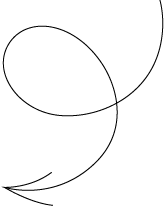Fading Far
a collaborative zine about time and
the feeling of place in between
the Japanese and Russian suburbs
Photo: Rina Nakano
Texts and audio: Ksenia Kopalova
the feeling of place in between
the Japanese and Russian suburbs
Photo: Rina Nakano
Texts and audio: Ksenia Kopalova
'Fading Far' is an online zine produced as an outcome of a 3-week art residency 'no-mu' in Kameoka, Japan. It unites the works of two practitioners: a photographer Rina Nakano (Oita, Japan) and an illustrator Ksenia Kopalova (Moscow, Russia). The zine explores the concept of place and the feeling of time as it flows in mundane suburbia, be that located in Japan or in Russia. The zine is bilingual: it is written in Japanese and in Russian, with texts and translation shifts merging experiences from Russia and Japan together. It does not have an English version, as a non-mediated dialogue of experiences was important for this collaboration.
RU+JP
research behind the project
research behind the project
research behind the project
research behind the project

one of the houses that still struggles to be renovated

Kameoka is a suburban city near Kyoto, with around 90000 citizens, many of which commute to work to Kyoto turning the place into a residential area with few prominent spots on the map — very much similarly to the town in Russia where I was born.





How does a commuter lifestyle affect a suburban area?
How can interdisiplinary approach describe a place?






How do drastically different locations merge in one's perception?


It is a city of mixed architecture: contemporary concrete blocks are neighbouring the cheaper 60-s housing and traditional 100-year-old buildings. A lot of the latter have suffered earthquakes and are still being repaired and renovated: these houses stand covered with distinctive blue sheets: the same material is use for hanami spring picnics.
a bamboo thicket by the field
The area is known for its agricultural business, and a large part of the area is surrounded by quiet fields filled with miscanthus and napa cabbage.
The residency participants came from a variety of backgrounds: photography, japanology, enterpreneurship, culinary art, visual art, illustration, music.
Local food fair
There were lots of opportunities for collaboration, from quite formal tours and visits to shrines to cooking together and nabe parties.
The house where I was staying was a 60-s building, with thin walls, a kotatsu table and a kitchen reminiscent of dachas in Russia.

This improbable parallel in my perception was amplified with an unexpected encounter with a tea ceremony master from Kameoka, who kindly showed her traditional house and invited us to the tea ceremony.

one of the oldest houses in Kameoka, kindly shown by the tea ceremony master, her bonsai composition and a khokhloma plate she brought from a trip to Russia
How do formal and informal images of a place differ from each other?
The similarities in the landscape (quiet fields, a river, a mix of buildings from various time periods), lifestyles (commuters only inhabiting the town at night — to sleep), house organisation strangely neighboured very distant locations, which became the fabric for the project.



one of the private gardens in Kameoka

ksenia.jpg@gmail.com •
ksenia.jpg@gmail.com
ksenia.jpg@gmail.com •
ksenia.jpg@GMAIL.COM •
©2022